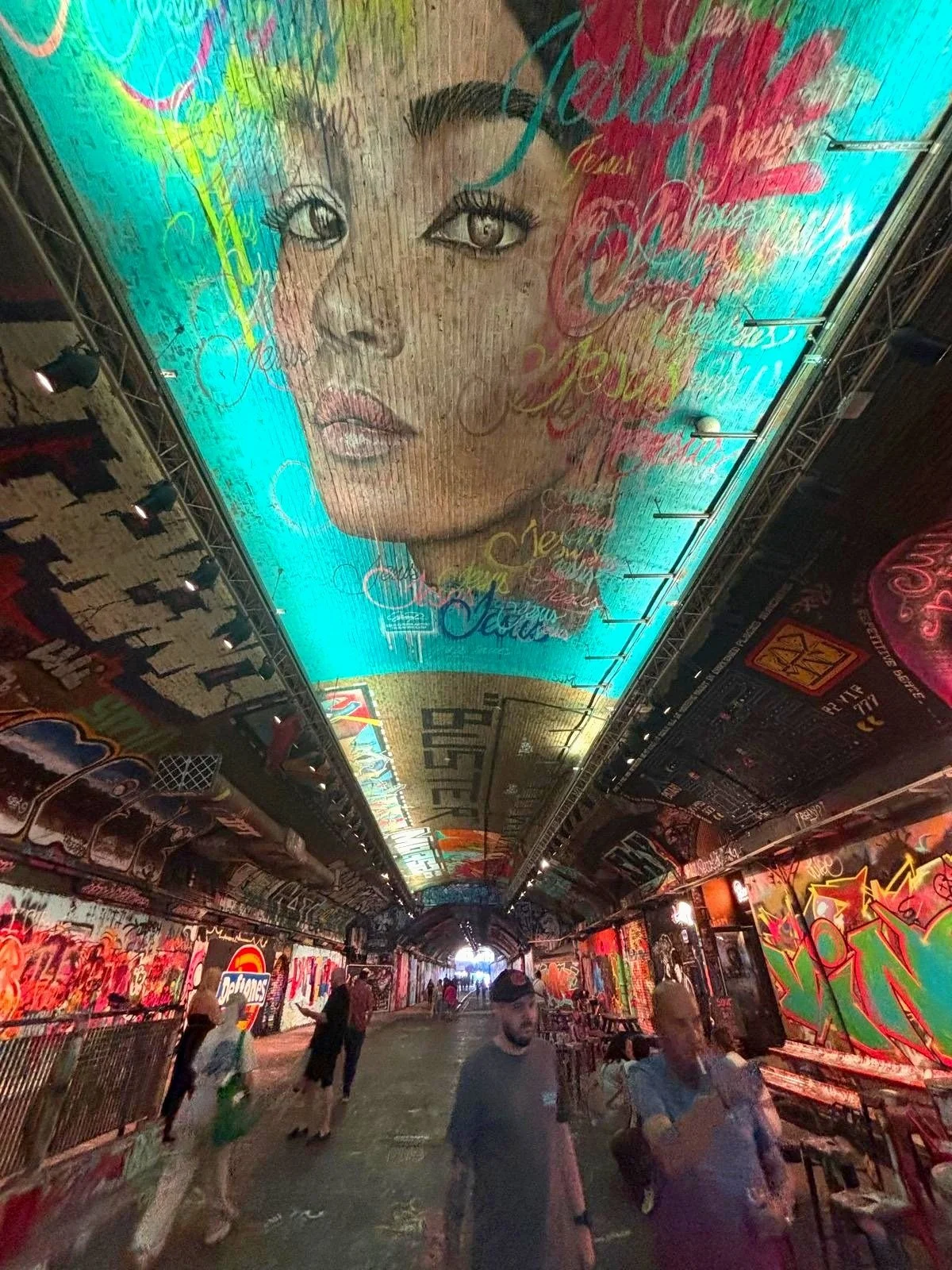The Leake Street Graffiti Tunnel, London
The Leake Street Graffiti Tunnel
An Urban Gallery Under the Train Tracks
The Leake Street Graffiti Tunnel, aka the Banksy Tunnel, is a 300-metre-long public throughfare crossing beneath the railway tracks and linking Waterloo with the South Bank in central London, just behind the London Eye on the River Thames.
Once part of the old Eurostar terminal, the Leake Street Tunnel became a dark and neglected alley after the company moved to its current location at St Pancras station. That is, until the legendary street artist Banksy spotted the site and used it for his 2008 Cans Festival. The festival opened the site up to street artists from near and far, giving them the chance to showcase their work within the tunnel, and transforming the derelict underpass into the vibrant, colourful urban gallery that it is today.
The Graffiti Tunnel has become a showcase of a forever-changing collection of artwork and murals. Artists are free to come and leave their mark, even painting over existing artworks, thus ensuring that no two visits to the tunnel are ever the same.
Blek Le Rat street art in the Leake Street Graffiti Tunnel
Street art within the Graffiti Tunnel
Dr Leake and the Westminster Lying-In Hospital
But what does a Graffiti tunnel have to do with medical history, you may ask? The Leake Street Tunnel takes its name from Dr John Leake, who is remembered not only as a distinguished doctor and educator but also as the founder of the Westminster Lying-In Maternity Hospital, which was once located on the site.
Dr John Leake, a prominent obstetrician, or 'Physician Man-Midwife’ as they were known at the time, was born in 1729 in Cumberland. He became an apprentice to a surgeon in London, where he developed a lifelong interest in pregnancy and childbirth. At a time when maternal mortality was common, with about 1 in 100 women dying as a result of childbirth in London, Dr Leake garnered support from wealthy benefactors to purchase land and build the Westminster Lying-in Hospital in 1767. This hospital was specifically designed for pregnant women from poor families who often faced the worst outcomes for both mother and baby.
The hospital was founded in a time when antenatal care didn't exist, operations were performed without anaesthesia, and the treatment for complicated births was unimaginably horrendous. The lying-in hospitals were often dirty, with poor ventilation and overcrowding, not to mention the abysmal hygiene practices that were the norm of the day. The doctors and midwives would move from one patient to the next, performing procedures and delivering babies, even going from dissecting corpses to delivering babies without washing hands or changing clothes. It's surprising the mortality rate wasn't actually higher.
Though obvious to us now, at the time, the cause of childbed fever remained a mystery, and it wasn't until the bacterium Streptococcus pyogenes was discovered in 1879 by Louis Pasteur that the cause was finally identified. But well before germ theory became widely accepted in the medical community, Dr Leake insisted on a contagious nature of childbed fever and demanded that his hospital use clean bed linen and disinfectants to prevent transmission between patients. And, luckily for his patients, his insistence on better hygiene practices resulted in better outcomes for both mother and child.
The Hospital served the community from its opening in 1767 until it closed its doors in 1971, when maternity care was moved to the nearby St Thomas’s Hospital. The building we see today, which is the General Lying-in Hospital, was constructed near the original Westminster site in 1830 and is now part of the Premier Inn, Waterloo. The hospital’s name is still displayed above the doors, reminding hotel guests of its previous life.
Entrance to the Leake Street Graffiti Tunnel
Top Tips
Leake Street Tunnel is a public thoroughfare that is open 24/7 and lies beneath the tracks of Waterloo train station. It is a short 5-minute walk from either Waterloo or Lambeth North underground stations, located on either side of the tunnel.
There are numerous bars and restaurants just outside as well as inside the tunnel to choose from, but there are no public toilets. Waterloo Station would have the closest public facilities if needed.
Graffiti and street art are permitted and encouraged within the tunnel at all times, and if you're lucky, you may be able to see an artist or two in action.
For the aspiring graffiti artists among us, street art workshops run in the tunnel regularly, catering for both kids and adults. Book tickets on their webpage: https://www.leakestreetarches.london/graffiti-workshops.



